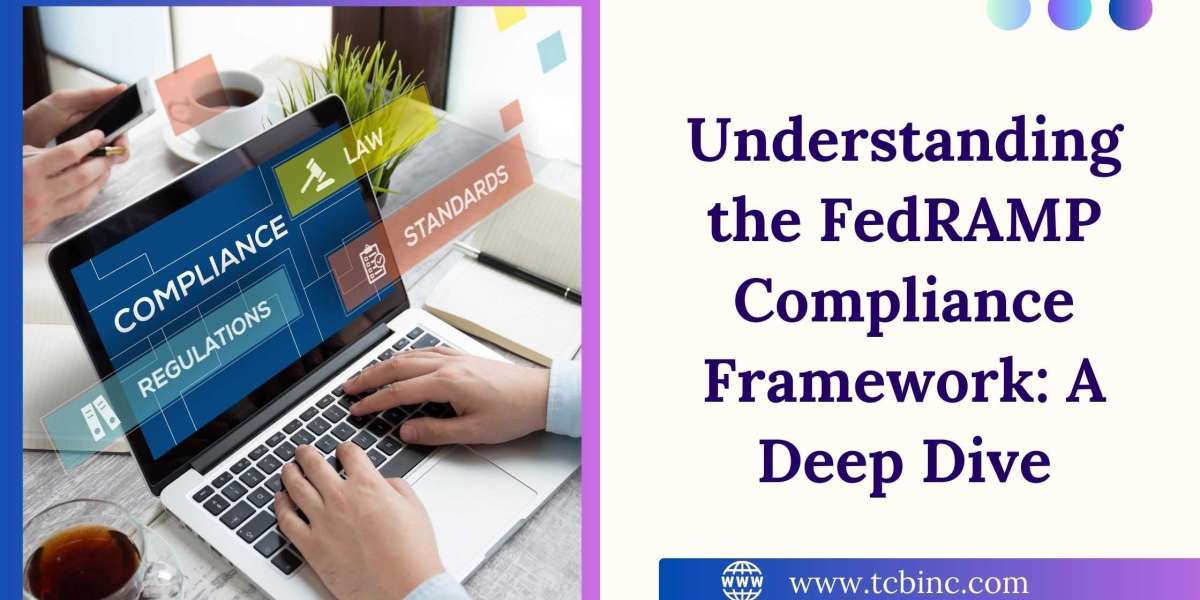In today's digital landscape, the security of data is paramount, especially for organizations dealing with federal information. The Federal Risk and Authorization Management Program (FedRAMP) sets the standard for security assessment, authorization, and continuous monitoring for cloud products and services used by federal agencies. Understanding the FedRAMP compliance framework is crucial for cloud service providers (CSPs) aiming to do business with the federal government. This blog provides a deep dive into the FedRAMP compliance framework, its components, and the steps required to achieve compliance.
What is FedRAMP?
FedRAMP is a government-wide program that provides a standardized approach to security assessment, authorization, and continuous monitoring for cloud products and services. It aims to ensure the security of cloud services used by federal agencies by leveraging a consistent set of standards and processes. FedRAMP's goals include increasing the use of secure cloud solutions, improving the security of shared cloud services, and achieving cost savings for the government.
Key Components of the FedRAMP Compliance Framework
The FedRAMP compliance framework consists of several key components designed to ensure the security and reliability of cloud services. These components include:
1. Security Controls
FedRAMP uses a set of security controls based on the National Institute of Standards and Technology (NIST) Special Publication 800-53. These controls cover a wide range of security aspects, including access control, incident response, and system integrity. CSPs must implement these controls to meet FedRAMP requirements.
2. Baseline Levels
FedRAMP defines three baseline levels of security: Low, Moderate, and High. These levels correspond to the potential impact on federal information and operations if a security breach occurs. The level of security required depends on the type of data and the risk it poses to the federal agency.
Low Baseline: Suitable for systems where the loss of confidentiality, integrity, and availability would have a limited adverse effect.
Moderate Baseline: Appropriate for systems where the loss would have a serious adverse effect.
High Baseline: Necessary for systems where the loss would have a severe or catastrophic effect.
3. Authorization Process
The FedRAMP authorization process involves several stages, including:
Preparation: CSPs prepare their systems by implementing the required security controls and conducting a self-assessment.
Security Assessment: An independent Third-Party Assessment Organization (3PAO) conducts a thorough security assessment to validate the implementation of security controls.
Authorization: The assessment results are reviewed, and the system may be granted an Authorization to Operate (ATO) by a federal agency or the Joint Authorization Board (JAB).
Continuous Monitoring: Once authorized, CSPs must continuously monitor their systems and report on security posture, addressing any issues that arise.
4. Documentation
Comprehensive documentation is a critical aspect of the FedRAMP compliance process. CSPs must provide detailed documentation of their security controls, system architecture, and assessment results. This documentation is reviewed during the authorization process and must be maintained and updated regularly.
Steps to Achieving FedRAMP Compliance
Achieving FedRAMP compliance involves several steps, from initial preparation to ongoing monitoring. Here’s a closer look at the process:
1. Pre-Assessment Preparation
CSPs should start by familiarizing themselves with FedRAMP requirements and assessing their current security posture. This includes identifying the appropriate security baseline and implementing the necessary security controls.
2. Engage a 3PAO
Selecting an accredited Third-Party Assessment Organization (3PAO) is essential for conducting an independent security assessment. The 3PAO will evaluate the CSP's implementation of security controls and provide an objective assessment report.
3. Develop Documentation
Comprehensive and accurate documentation is crucial for FedRAMP compliance. This includes the System Security Plan (SSP), security assessment reports, and continuous monitoring plans. Detailed and precise documentation can streamline the authorization process and demonstrate compliance with FedRAMP requirements.
4. Security Assessment
The 3PAO conducts a thorough security assessment, testing the implementation of security controls and identifying any vulnerabilities. The assessment results are documented in a security assessment report, which is submitted for review.
5. Authorization
Based on the security assessment report, a federal agency or the JAB reviews the findings and determines whether to grant an ATO. This process involves a detailed review of the documentation and assessment results.
6. Continuous Monitoring
Achieving FedRAMP compliance is not a one-time effort. CSPs must continuously monitor their systems, conduct regular security assessments, and update their documentation to maintain their authorized status. Continuous monitoring ensures that security controls remain effective and any issues are promptly addressed.
Benefits of FedRAMP Compliance
Achieving FedRAMP compliance offers several benefits for CSPs, including:
Market Access: FedRAMP authorization is often a prerequisite for doing business with federal agencies, opening up new market opportunities.
Enhanced Security: Implementing FedRAMP security controls improves the overall security posture of the CSP, protecting against threats and vulnerabilities.
Competitive Advantage: FedRAMP compliance demonstrates a commitment to security and regulatory requirements, providing a competitive edge in the marketplace.
Cost Savings: By leveraging a standardized approach to security assessment and authorization, CSPs can reduce the time and cost associated with obtaining multiple authorizations for different federal agencies.
Conclusion
Understanding the FedRAMP compliance framework is essential for CSPs aiming to provide cloud services to federal agencies. By adhering to the standardized security controls, baseline levels, and rigorous authorization process, CSPs can achieve FedRAMP compliance, ensuring the security and reliability of their cloud solutions. While the path to compliance may be complex, the benefits of market access, enhanced security, and competitive advantage make it a worthwhile investment. With careful preparation, comprehensive documentation, and continuous monitoring, CSPs can successfully navigate the FedRAMP compliance framework and meet the stringent requirements of federal agencies.








